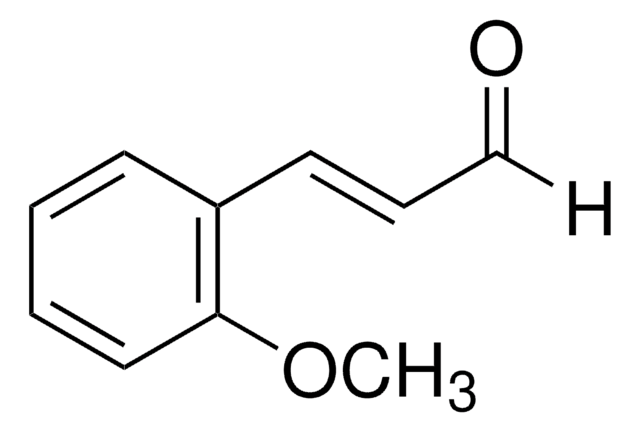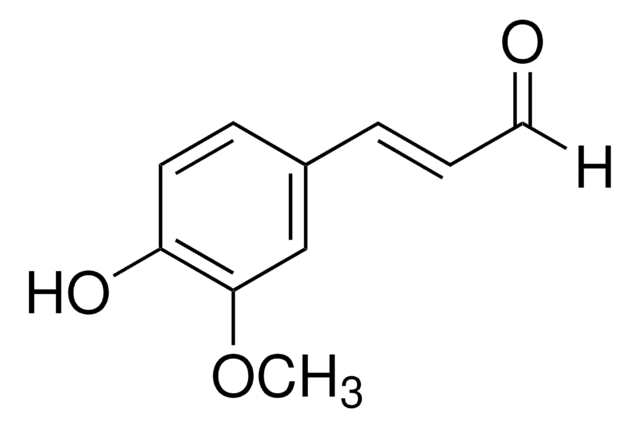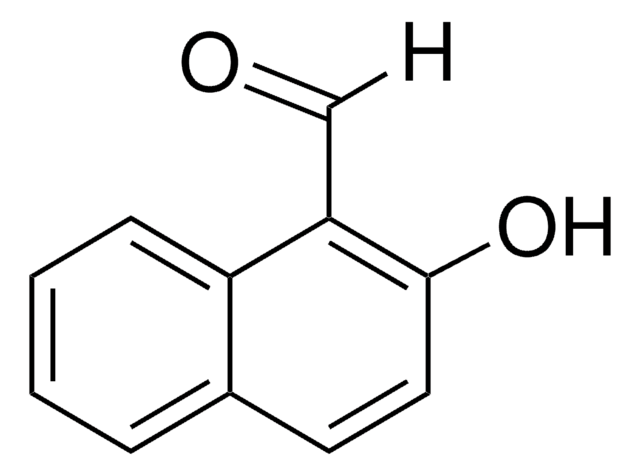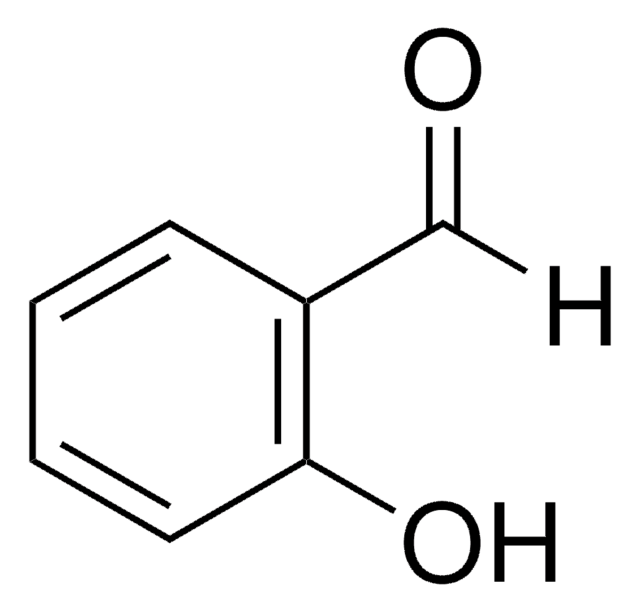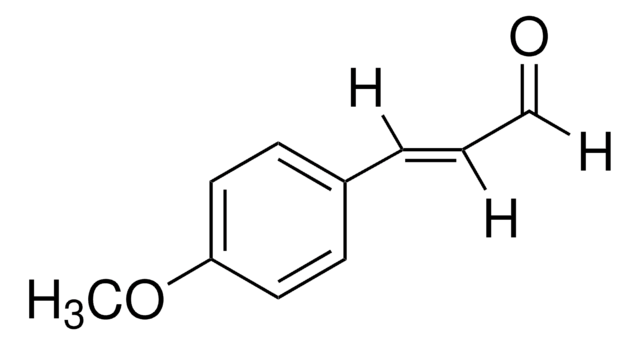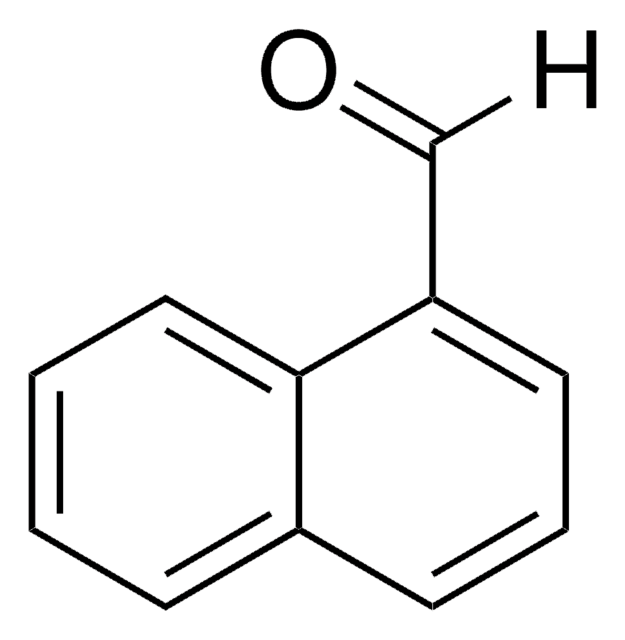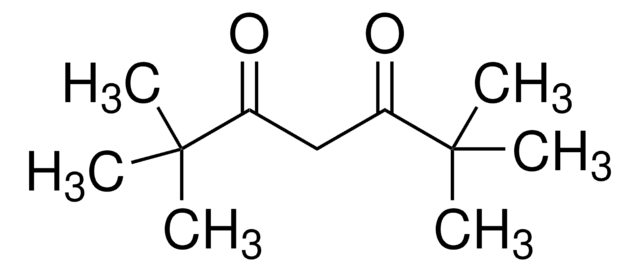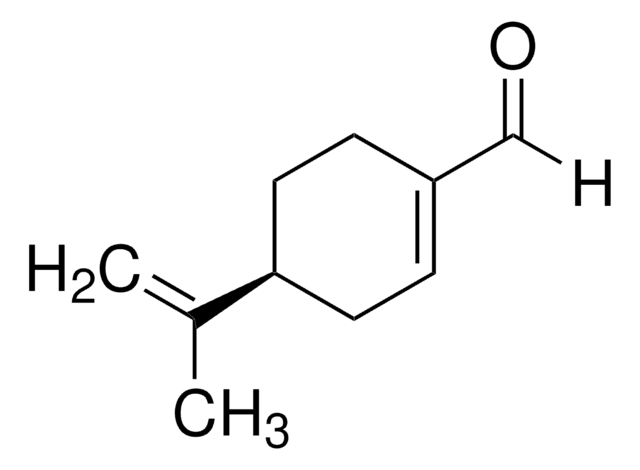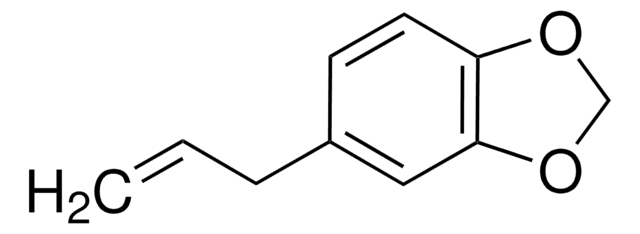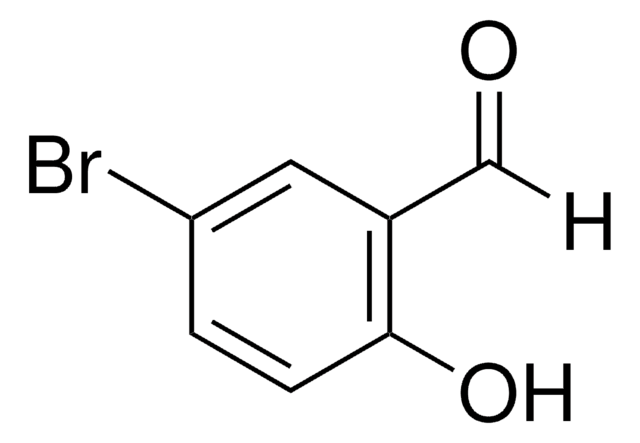289019
2-Methoxycinnamaldehyde, predominantly trans
96%
Sign Into View Organizational & Contract Pricing
All Photos(1)
About This Item
Linear Formula:
CH3OC6H4CH=CHCHO
CAS Number:
Molecular Weight:
162.19
EC Number:
MDL number:
UNSPSC Code:
12352100
PubChem Substance ID:
Recommended Products
Quality Level
Assay
96%
form
solid
bp
128-130 °C/0.6 mmHg (lit.)
mp
44-46 °C (lit.)
SMILES string
COc1ccccc1\C=C\C=O
InChI
1S/C10H10O2/c1-12-10-7-3-2-5-9(10)6-4-8-11/h2-8H,1H3/b6-4+
InChI key
KKVZAVRSVHUSPL-GQCTYLIASA-N
General description
2-Methoxycinnamaldehyde is one of the components of Cinnamomum cassia. It was identified using high-pressure liquid chromatography (HPLC) and gas chromatography–mass spectrometry.
Signal Word
Warning
Hazard Statements
Precautionary Statements
Hazard Classifications
Eye Irrit. 2 - Skin Irrit. 2 - STOT SE 3
Target Organs
Respiratory system
Storage Class Code
11 - Combustible Solids
WGK
WGK 2
Flash Point(F)
235.4 °F
Flash Point(C)
113 °C
Personal Protective Equipment
dust mask type N95 (US), Eyeshields, Gloves
Regulatory Information
新产品
Choose from one of the most recent versions:
Already Own This Product?
Find documentation for the products that you have recently purchased in the Document Library.
R Z Behar et al.
Toxicology in vitro : an international journal published in association with BIBRA, 28(2), 198-208 (2014-02-12)
In a prior study on electronic cigarette (EC) refill fluids, Cinnamon Ceylon was the most cytotoxic of 36 products tested. The purpose of the current study was to determine if high cytotoxicity is a general feature of cinnamon-flavored EC refill
Tran Minh Ngoc et al.
Natural product communications, 9(4), 487-488 (2014-05-30)
A new coumarin derivative, coumacasia (1) and eight known compounds, coumarin (2), cinnamaldehyde (3), 2-methoxycinnamaldehyde (4), 2-hydroxycinnamaldehyde (5), coniferaldehyde (6), cinnamic acid (7), 2-hydroxycinnamic acid (8), and cinnamic alcohol (9), were isolated from the methanol extract of Cinnamomum cassia. Their
Daishi Yamakawa et al.
Biochemical and biophysical research communications, 415(1), 174-180 (2011-10-29)
Blood vessels are mainly composed of intraluminal endothelial cells (ECs) and mural cells adhering to the ECs on their basal side. Immature blood vessels lacking mural cells are leaky; thus, the process of mural cell adhesion to ECs is indispensable
Ludger Wennemann et al.
Mededelingen (Rijksuniversiteit te Gent. Fakulteit van de Landbouwkundige en Toegepaste Biologische Wetenschappen), 67(3), 499-509 (2003-04-17)
High wheel tractor applications of 4-methoxycinnamaldehyde (MCA)-coated corn granules ('grits') were conducted in Ruski Krstur (Serbia) in summer 2001 in a 5 ha corn field. Grits are a by-product after corn is harvested and separated from the cob and used
Alavala Matta Reddy et al.
Planta medica, 70(9), 823-827 (2004-10-27)
Nuclear factor (NF)-cB is a transcription factor regulating the expression of inflammatory and immune genes. In the present study, an extract from stem bark of Cinnamomum cassia Blume(Lauraceae) was discovered to have an inhibitory effect on LPS-induced NF-KB transcriptional activity
Our team of scientists has experience in all areas of research including Life Science, Material Science, Chemical Synthesis, Chromatography, Analytical and many others.
Contact Technical Service